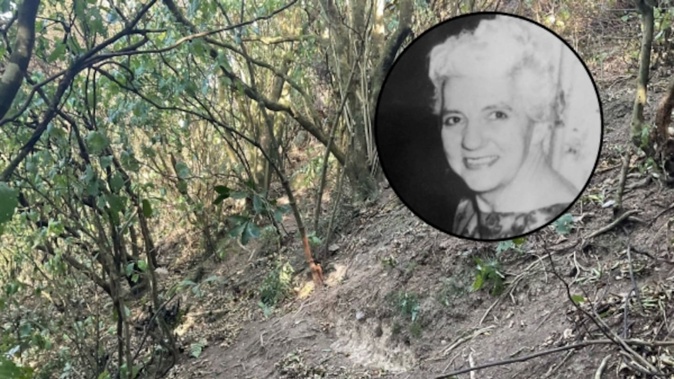
A DNA match has confirmed a skeleton found in a remote area of Porirua belongs to a woman who went missing from the nearby psychiatric hospital 36 years ago.
But a visit to the “godforsaken place” where the remains were found has left the woman’s daughter with more questions than answers.
Hilary Martin had earlier told the Herald she believed her mother had died by suicide, having previously told her family if she had to go back to Porirua Hospital she would disappear and nobody would ever find her.
But Martin said a visit to the site had left her questioning how her mother, Patricia Burt, was able to travel rugged terrain and a steep slope in slippers and with osteoporosis to reach the spot where she was eventually found.
The officer in charge of the investigation, Detective Senior Sergeant Hamish Blackburn, said police had uncovered no evidence of foul play or suspicious activity.
“I said to Hilary ‘we are never going to fully understand or have the answers as to how [she] came to be there’,” he said.
Burt, 68, disappeared on Easter weekend 1988. Her family said she was never searched for, and a police officer at the time told them they did not look for people who went missing from Porirua Hospital.
Martin earlier told the Herald her mother had struggled with mental health issues her entire life and had been taken to Porirua Hospital many times, where she received electroshock therapy.
Martin said police had since told her Burt had been diagnosed with dementia right before she disappeared.
She and her family believed her mother had died by suicide, but after visiting the site in Porirua’s Whitireia Park in March, she now believed something suspicious had happened to Burt, or that she may have died by “misadventure”.
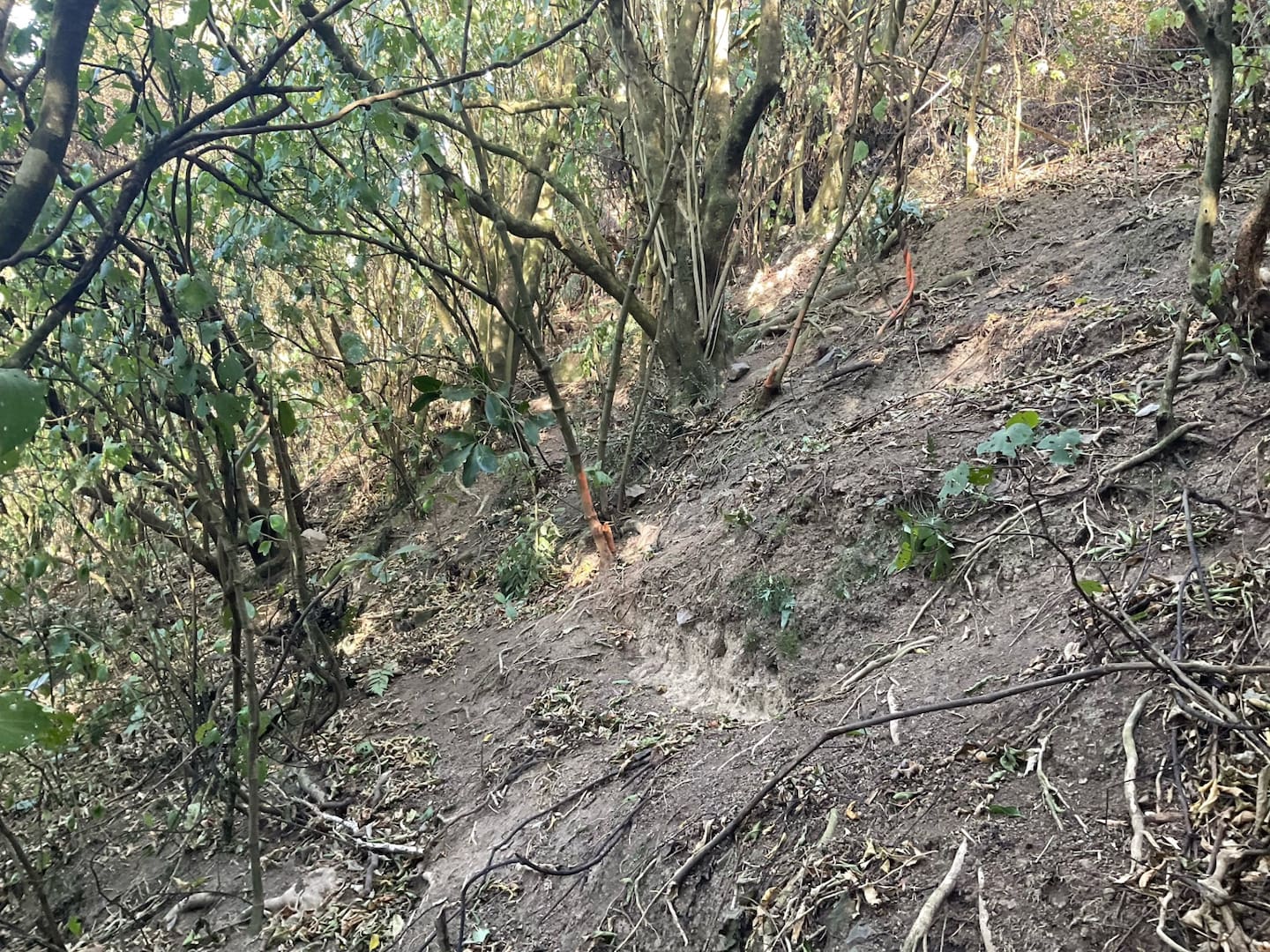 The site where Patricia Burt's skeleton was discovered. Photo / Hilary Martin
The site where Patricia Burt's skeleton was discovered. Photo / Hilary Martin
“The site was far too difficult for anybody to get there. Someone would have to be an Olympian or very fit person to be able to climb the rugged hill we climbed,” she said.
Police escorted Martin and her husband to the site in a 4WD, taking them through a locked gate and high up a ridge, which they then had to climb down to the area where the remains were found.
Neither she nor her husband felt they would have been able to access the area without police help, even in their youth.
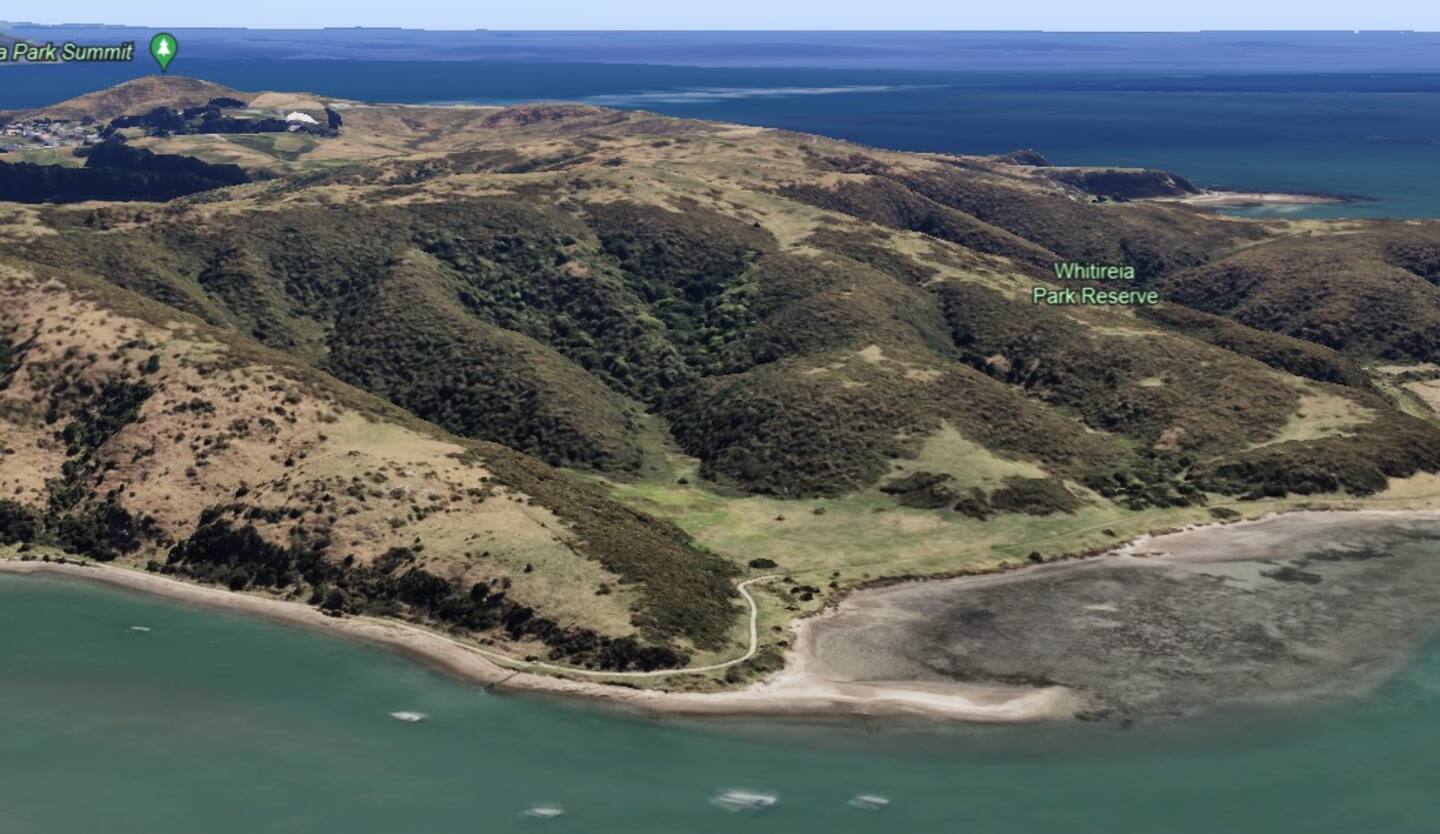 Patricia Burt's remains were found near the centre of this patch of bush in Porirua's Whitireia Park. Image / Google Earth
Patricia Burt's remains were found near the centre of this patch of bush in Porirua's Whitireia Park. Image / Google Earth
Even reaching the top of the ridge in the 4WD was difficult, with Martin thinking at one point the vehicle might tip on its side.
She said it was a shock to realise how hard the spot was to reach, and did not believe her mother could have gone there on her own.
“I would have to say it was like a mountain, looking down the slope.
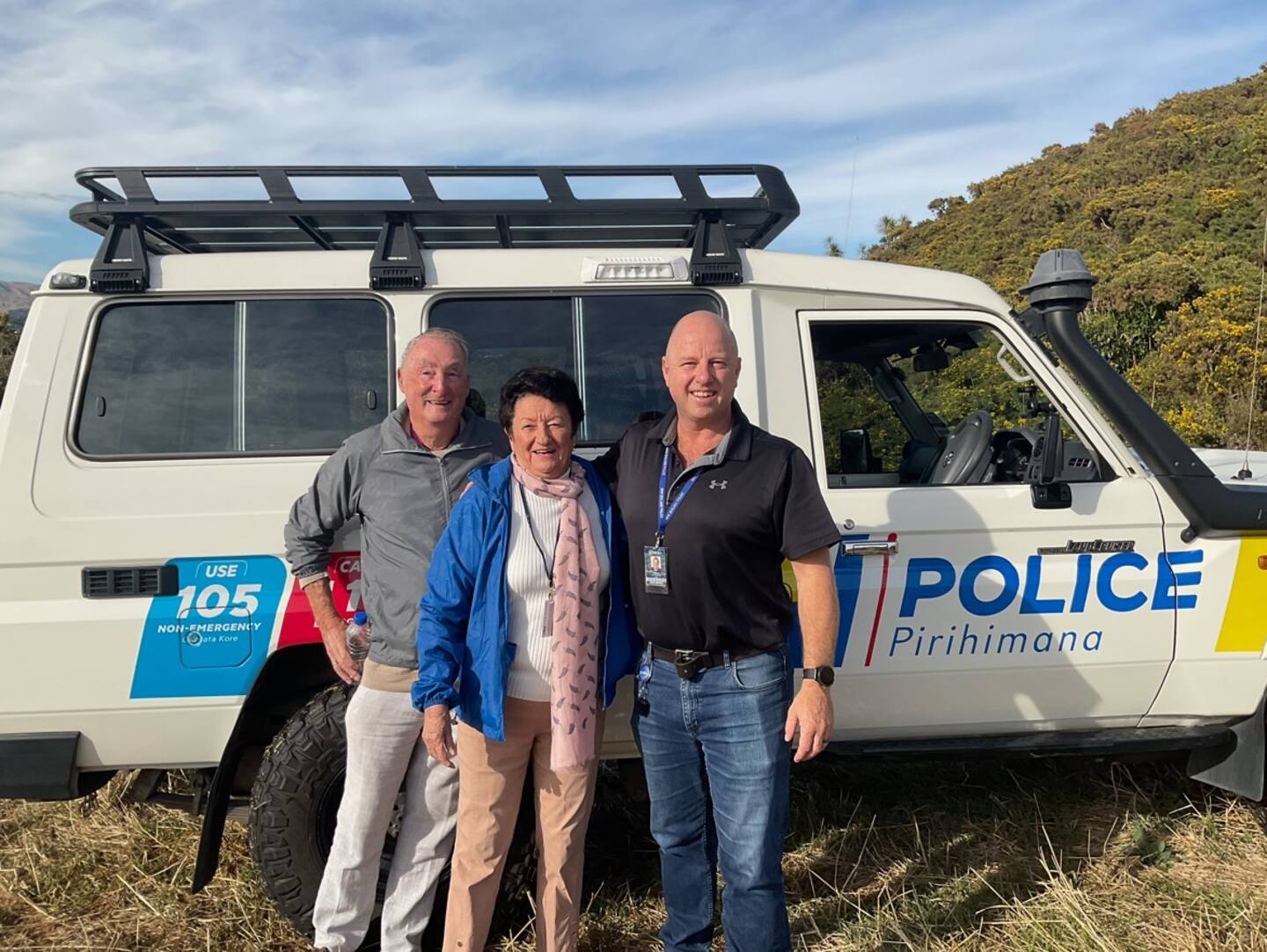 Myles Martin (left), Hilary Martin and Detective Senior Sergeant Hamish Blackburn travelled to the scene in a police 4WD.
Myles Martin (left), Hilary Martin and Detective Senior Sergeant Hamish Blackburn travelled to the scene in a police 4WD.
“You would have to see it to believe it, it was a godforsaken place ... that’s why the skeleton was never found.
“I believe and so does [my husband] that something suspicious happened ... if you’re going to plan suicide, you don’t plan the most remote place in the world, where the terrain is so difficult. You just couldn’t do it.”
Martin said the realisation was “very upsetting”.
“We were hoping that it would comforting to see that was her resting place, but it became disturbing.”
Police initially identified Burt by items found with her at the scene, including a medical bracelet and a denture case. An initial DNA test came back inconclusive, but the second DNA test, which came back last week, confirmed a match with Burt’s son.
Martin said police had also removed Burt’s slippers to discover two of her toes were missing — which lined up with the knowledge she had had two toes amputated earlier in her life.
She said her mother’s skull was also found 2m away from the rest of her skeleton, and her “beautiful piano hands” were missing entirely. It is possible over 36 years these were scavenged by animals, and that the skull could naturally have separated and moved further away over that time.
“She could have fallen from the top and rolled down. Maybe the neck was broken and that’s why the skull separated,” she said.
“There are 101 possibilities what happened to Mum on the day she went missing, but the main issue is we found her skeleton after 36 years.”
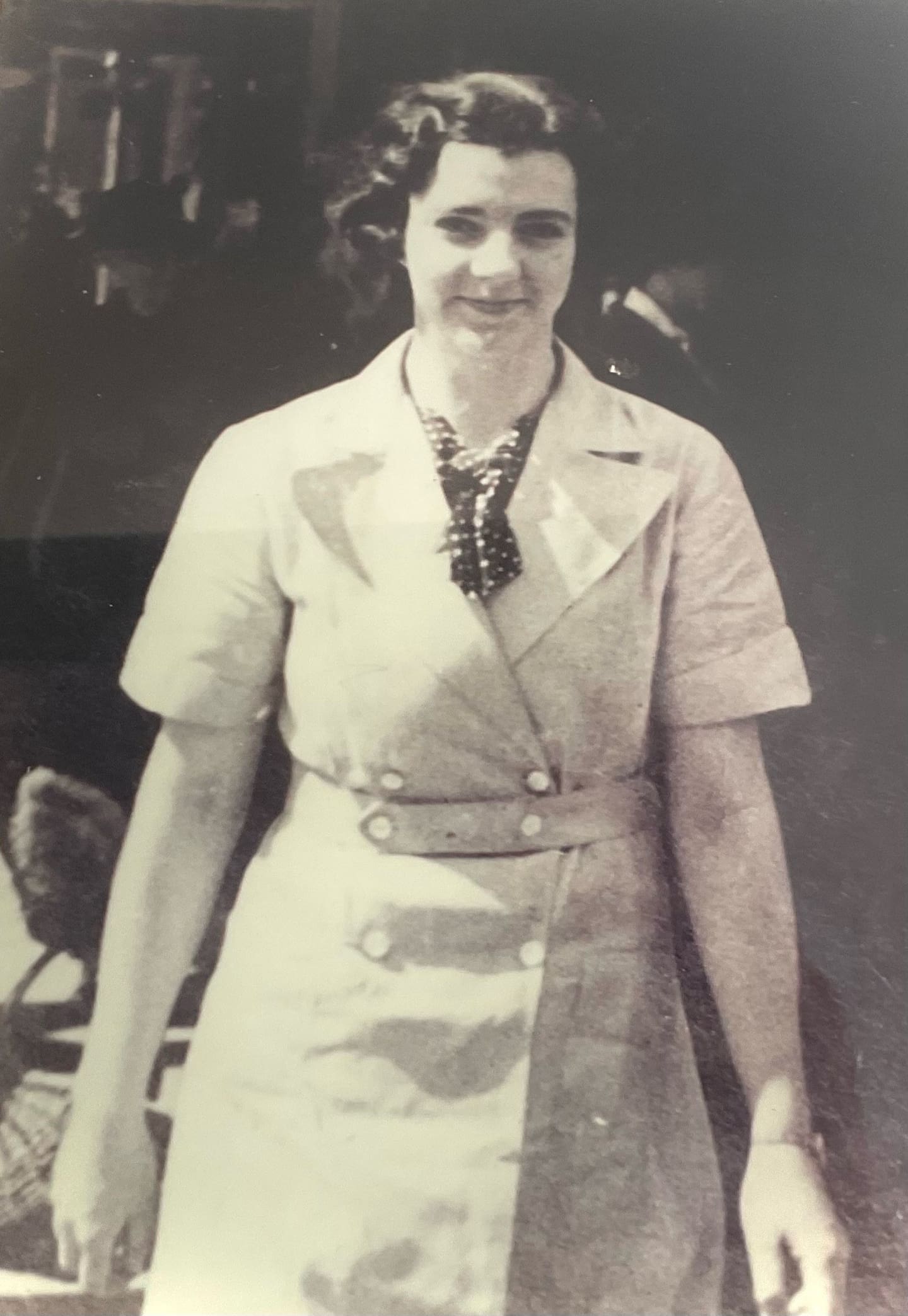 Patricia Theresa Burt went missing in Porirua in 1988.
Patricia Theresa Burt went missing in Porirua in 1988.
Blackburn told the Herald there were “a number of possibilities” as to what may have happened to Burt, but the most logical was that she had made her way to the park and taken her own life.
“I guess with her history of mental illness and the previous comments around suicide and ‘if I go to the hospital again I will never be found’, that perhaps that was her intention. I guess we will never fully understand the reasons why.”
He said the area was isolated, but people did walk along the coastline at the bottom of the hill.
“How she came to be up on the hill we don’t know. There’s nothing that we’ve uncovered in this investigation that would lead us to believe there was anything suspicious.”
He said the remains were found in dense bushes and undergrowth.
“It was quite hard to see. The bones were covered in moss and lots of foliage.”
Decidedly off the beaten track, the bones were found only because a man was searching the area for nesting seabirds.
“When we were first made aware of the human remains we reached out to a missing persons unit based at Police National Headquarters, and they gave us a list of missing people since the first of January 1980. They actually nominated Patricia Burt as a possible because she had been missing in the area.”
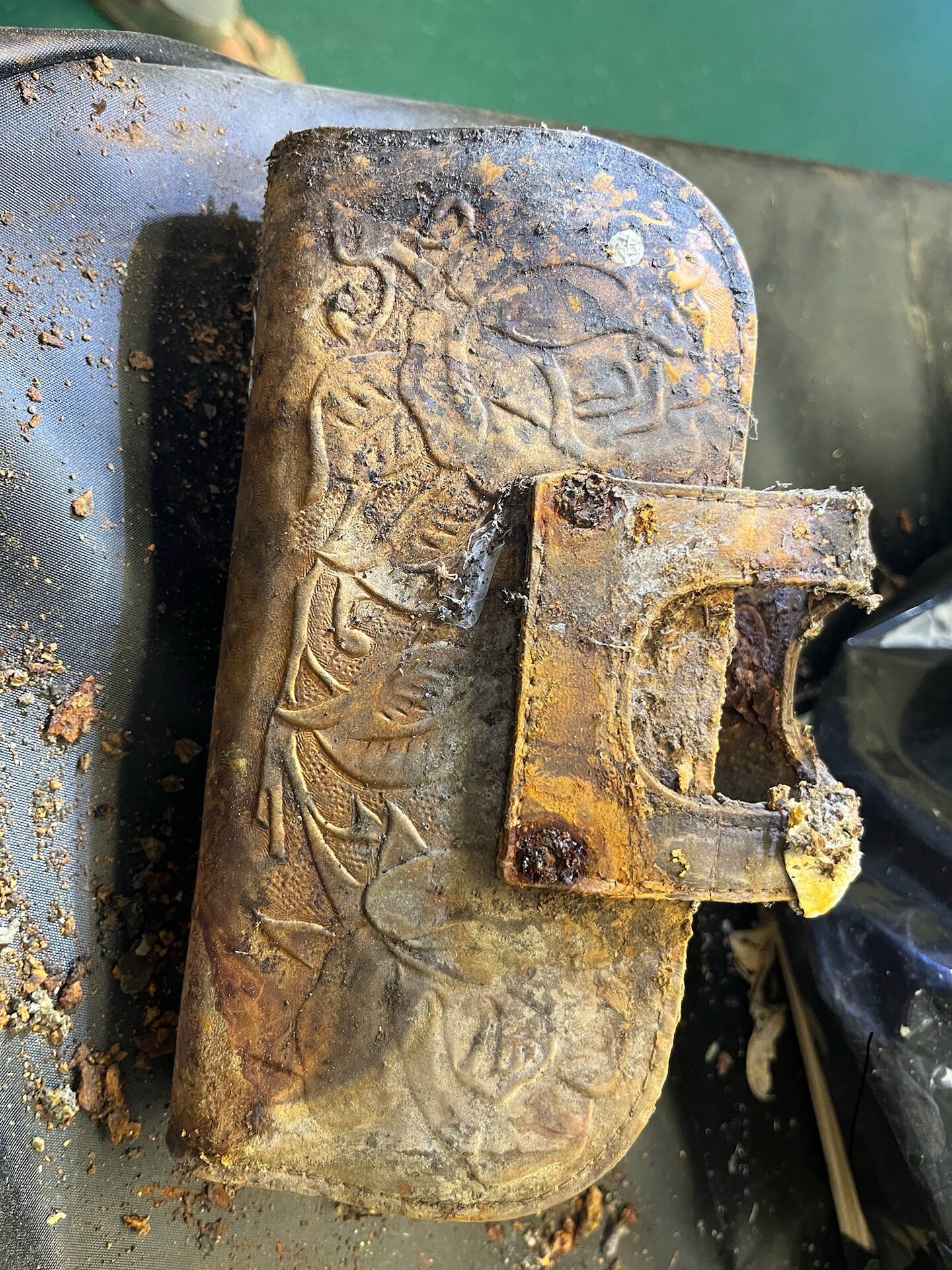 Items found at the scene helped police identify the remains belonged to Patricia Burt.
Items found at the scene helped police identify the remains belonged to Patricia Burt.
By the time police recovered the items at the scene such as the bracelet and dentures case, they knew they were on the right track.
“Those pieces of the puzzle were starting to come together nicely.”
While the investigation had been “challenging”, Blackburn also recognised the skeleton was an uncommon find.
“From time to time we find parts of bones that we can link back to missing people, but in terms of a mostly complete skeleton, it doesn’t happen too often at all.
“After 36 years it’s very pleasing for us to be able to confirm that it’s Patricia Burt, very pleasing to be able to get some closure for them. It was nice to be able to take Hilary and her husband up to the scene and show them exactly where she was.”
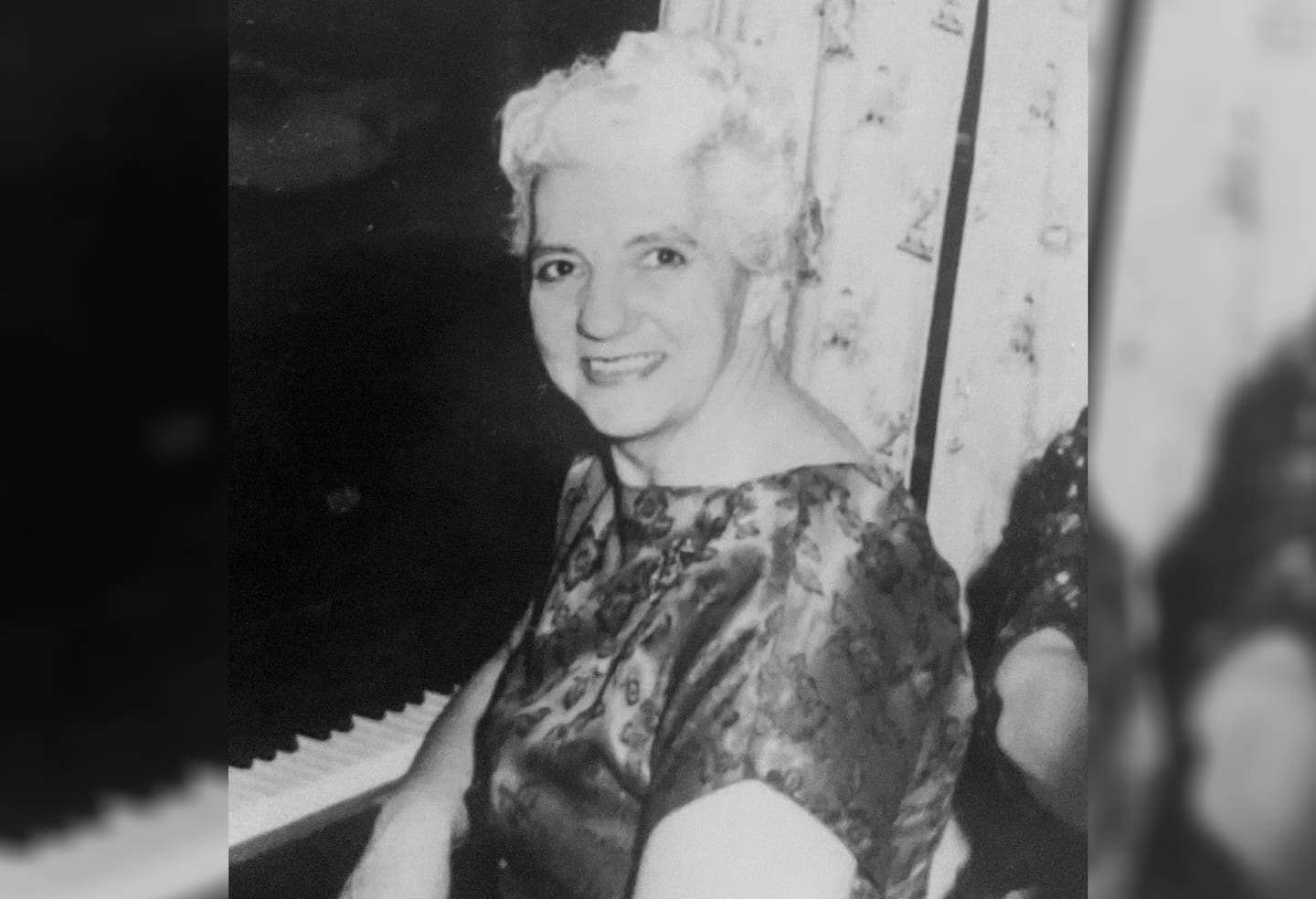 Patricia Theresa Burt was known for her beautiful piano playing.
Patricia Theresa Burt was known for her beautiful piano playing.
Martin said despite being uncertain how her mother ended up where she did, they now had closure. The remains would be released to the family once the coroner was finished with them.
“We will bury her ashes with Dad at the Taitā Soldiers Cemetery in Naenae. We did have a small ceremony for Mum back in the 90s.
“I’m feeling very blessed that she’s been found after all these years. I’m feeling that we can put some closure to this, but I’m also feeling now that something happened to my mother.”
SUICIDE AND DEPRESSION
Where to get help:
• Lifeline: Call 0800 543 354 or text 4357 (HELP) (available 24/7)
• Suicide Crisis Helpline: Call 0508 828 865 (0508 TAUTOKO) (available 24/7)
• Youth services: (06) 3555 906
• Youthline: Call 0800 376 633 or text 234
• What's Up: Call 0800 942 8787 (11am to 11pm) or webchat (11am to 10.30pm)
• Depression helpline: Call 0800 111 757 or text 4202 (available 24/7)
• Helpline: Need to talk? Call or text 1737
If it is an emergency and you feel like you or someone else is at risk, call 111.
Melissa Nightingale is a Wellington-based reporter who covers crime, justice and news in the capital. She joined the Herald in 2016 and has worked as a journalist for 10 years.
Take your Radio, Podcasts and Music with you









